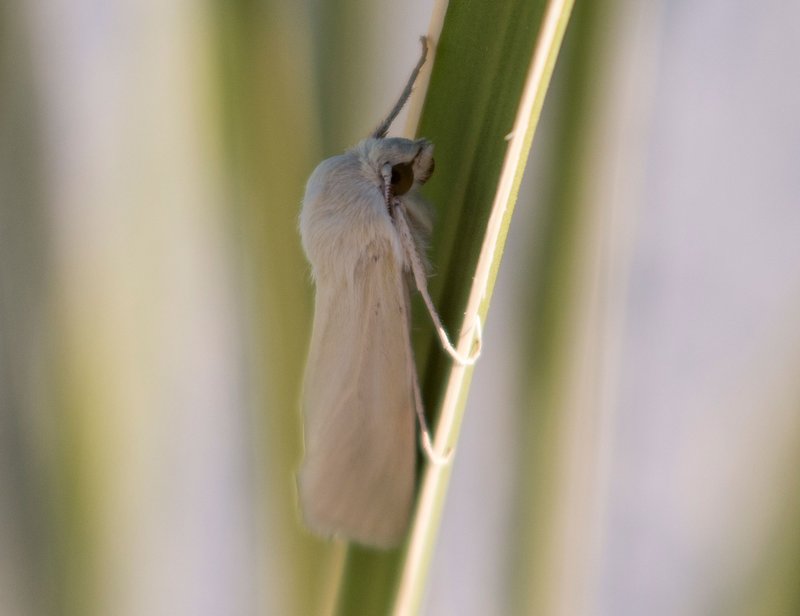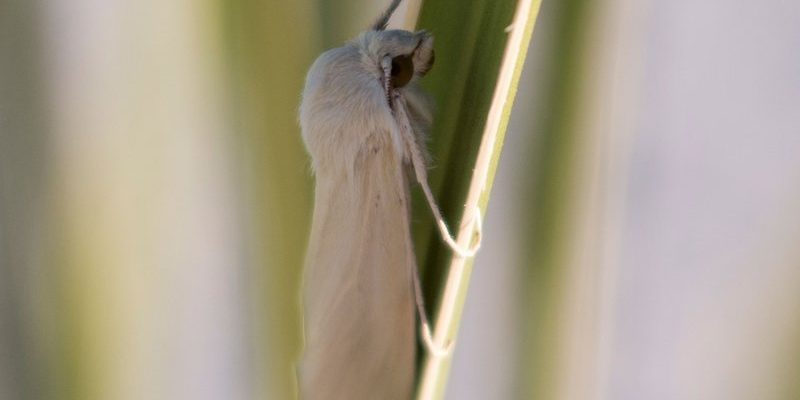
The Yucca Moth might not be the first insect that comes to mind when you think about fascinating creatures, but it plays a crucial role in nature’s balance. Imagine a tiny pollinator that’s perfectly attuned to the plants it helps thrive. That’s what the Yucca Moth is all about. This remarkable little moth has a special relationship with the yucca plant, creating a beautiful dance of survival that’s both intricate and essential.
When you see a yucca plant blooming, it might seem like just another pretty flower. However, without the Yucca Moth, those blossoms would miss out on one thing—pollination. Here’s the thing: this relationship is not just one-sided. Both the moth and the plant benefit from this collaboration in ways that are truly remarkable. In this article, we’ll explore the fascinating life of the Yucca Moth, from its lifecycle to its unique symbiotic connection with yucca plants.
The Lifecycle of the Yucca Moth
The lifecycle of the Yucca Moth is a tale of transformation that begins with a single egg laid inside the flower of a yucca plant. After a few days, a small larva hatches from the egg, and you might think this is where trouble starts for the flower. However, rather than harming the plant, these larvae actually feed on a small number of its seeds, allowing the plant to focus on producing more flowers in the future. This is nature’s clever way of balancing growth and survival.
The metamorphosis continues as the larvae grow, moving through various stages until they finally mature into adult moths. Once they reach adulthood, they’ll emerge from the flower and begin the cycle anew. Interestingly, the adult Yucca Moth is primarily nocturnal, flying at night and often locating yucca flowers by their strong scent. This means they’re not just cute; they’re also clever navigators who have adapted perfectly to their environment.
The entire process from egg to adult takes about six to eight weeks, depending on environmental conditions. This rapid lifecycle enables the moth to take advantage of the yucca’s flowering season, ensuring the continuation of their unique partnership. The moth, with its white, furry body and delicate wings, might not look like much, but trust me, it’s playing a critical role in the ecosystem.
Understanding the Symbiotic Relationship
The relationship between the Yucca Moth and the yucca plant is a classic example of mutualism in nature, where both parties benefit from their interactions. While the moth relies on the yucca plant for reproduction, the plant needs the moth for pollination. This interdependence is fascinating. You might say, “They’re like a team!” Together, they ensure each other’s survival, making their bond stronger as they adapt and evolve over time.
When a female Yucca Moth visits a yucca flower, she collects pollen from the plant’s anthers. Then, she deliberately deposits some of that pollen onto the stigma of the same flower or a nearby flower while laying her eggs in the ovary. In essence, she is fertilizing the flower while preparing for her offspring’s future. It’s almost like she’s multitasking while doing her shopping—very efficient!
This intricate dance doesn’t just benefit the individual moth or flower; it helps maintain the health of the entire ecosystem. The yucca plant thrives and produces more flowers, while the Yucca Moth has a secure place to lay its eggs. This kind of relationship ensures that both organisms can flourish in their environment, which is something we should all admire and respect.
Yucca Moth Facts
| Common Name: | Yucca Moth |
| Habitat: | Deserts and arid regions where yucca plants grow |
| Size: | Approximately 1 inch in wingspan |
| Diet: | Pollinates yucca flowers and consumes yucca seeds |
| Life Cycle: | Egg to adult in 6-8 weeks |
| Color: | White and pale yellow with furry bodies |
The Role of Yucca Moths in Their Ecosystem
Yucca Moths are not just fascinating due to their relationship with yucca plants; they also contribute significantly to the ecosystem. By pollinating yucca flowers, they help maintain the health and sustainability of their local environment. The yucca plant, in turn, provides food and habitat for various other species, creating a diverse ecosystem that supports both plant and animal life.
Moreover, these moths serve as a food source for birds and other predators, linking them further in the food web. For many birds, the adult moth is a delicacy, while the larvae hidden within yucca seeds provide nutrition for various insects. This interconnectedness highlights how each species plays a role in maintaining ecological balance.
Ultimately, the Yucca Moth exemplifies how one small insect can have vast implications for its environment. The act of pollination is crucial for a plant’s reproduction, which supports a larger community of creatures around it. So, next time you spot a yucca flower, remember the Yucca Moth and its tireless work behind the scenes. It’s a reminder that every creature has its place in the grand tapestry of life.
Threats to the Yucca Moth
Despite its impressive adaptations and symbiotic relationships, the Yucca Moth faces several challenges in the wild. Habitat loss due to urban development and agricultural expansion poses a significant threat. As yucca plants are cleared away for construction or farming, the moths lose their homes and breeding grounds. This loss can lead to declining populations and, in turn, disrupt the delicate balance they maintain with yucca plants.
Pesticide usage is another major concern. While these chemicals aim to eliminate pests, they can inadvertently harm beneficial insects like the Yucca Moth. The use of pesticides can result in a reduction of both the adult moths and their larvae, leading to a decline in pollination rates and affecting the health of yucca populations.
Climate change is also altering the ecosystems where Yucca Moths thrive. Shifts in temperature and precipitation patterns can disrupt their life cycles and habitat availability. As yucca plants bloom at different times or become less viable due to stress from changing climates, the moths that rely on them may struggle to survive. Maintaining healthy yucca populations is essential not just for the moths but for the surrounding ecosystem.
Conservation Efforts
Conserving the Yucca Moth is critical not only for their survival but for the health of the ecosystems they support. Organizations focused on wildlife conservation are working to protect habitats and promote biodiversity. Efforts include creating parks and reserves where yucca plants can grow freely and sustainably, thus providing secure environments for the Yucca Moth to thrive.
Additionally, educating communities about the importance of these moths can lead to more environmentally friendly practices. Individuals can help by reducing pesticide use in their gardens, planting native yucca species, and supporting local conservation initiatives. Even small steps can make a significant difference when it comes to protecting these remarkable insects.
Research is crucial as well. Scientists continue to study the yucca plant and the moth’s behaviors to develop better conservation strategies. By understanding their needs and habitats, we can create more effective programs to ensure their survival. Together, we can help maintain the delicate balance of nature that allows the Yucca Moth and yucca plants to thrive.
FAQ
What do Yucca Moths eat?
Yucca Moths primarily feed on the pollen of yucca flowers. When they visit these flowers to lay their eggs, they gather pollen, which provides them with the nutrients they need. The adult moths do not consume the flowers or their leaves, making them essential pollinators instead of pests.
Are Yucca Moths harmful to yucca plants?
No, Yucca Moths are not harmful in the way you might expect from pests. While they do consume some seeds for their larvae, they also play a crucial role in pollinating the plants. This mutual relationship means both species benefit rather than suffer from each other’s presence.
Where can I find Yucca Moths?
You can find Yucca Moths in areas where yucca plants grow, typically in arid environments like deserts. They are primarily nocturnal, so you might spot them flying around yucca flowers at night, especially during the blooming season. Keep an eye out during warmer months for the best chance to see them!
What is the lifespan of a Yucca Moth?
The lifespan of a Yucca Moth varies, but as adults, they typically live for a few weeks to a couple of months. The entire lifecycle, from egg to adult, spans about six to eight weeks, depending on the environmental conditions they encounter.
Can Yucca Moths be harmful to humans?
Yucca Moths pose no harm to humans. They are not aggressive and do not sting or bite. Their primary focus is on pollinating yucca flowers and ensuring the survival of their species. Observing them in nature can be quite a delightful experience!
How do Yucca Moths find yucca flowers?
Yucca Moths use their keen sense of smell to locate yucca flowers. The scent of the flowers serves as a beacon, guiding them through the night. This ability is essential for their survival, as they must find these flowers to lay their eggs and feed on pollen.
What is the role of Yucca Moths in the ecosystem?
Yucca Moths play a crucial role in pollination, which is vital for the reproductive success of yucca plants. This relationship supports the wider ecosystem by ensuring that these plants can thrive and provide food and habitat for various other species.
Are there different species of Yucca Moths?
Yes, there are several species of Yucca Moths. Each species has adapted to specific types of yucca plants, highlighting the diversity within this fascinating group of insects. Each species plays a similar role in pollination, but the exact details of their relationships with yucca plants can vary.
What can I do to help Yucca Moths?
You can help Yucca Moths by planting native yucca species in your garden and avoiding the use of pesticides. Supporting local conservation efforts and educating others about the importance of these moths is also vital for their preservation. Every action counts when it comes to protecting nature!
Is it safe to handle Yucca Moths?
While it’s generally safe to observe Yucca Moths, it’s best not to handle them. They are delicate creatures and can be easily harmed. Observing them from a distance allows you to enjoy their beauty without causing any stress or damage to them.

